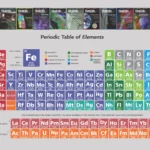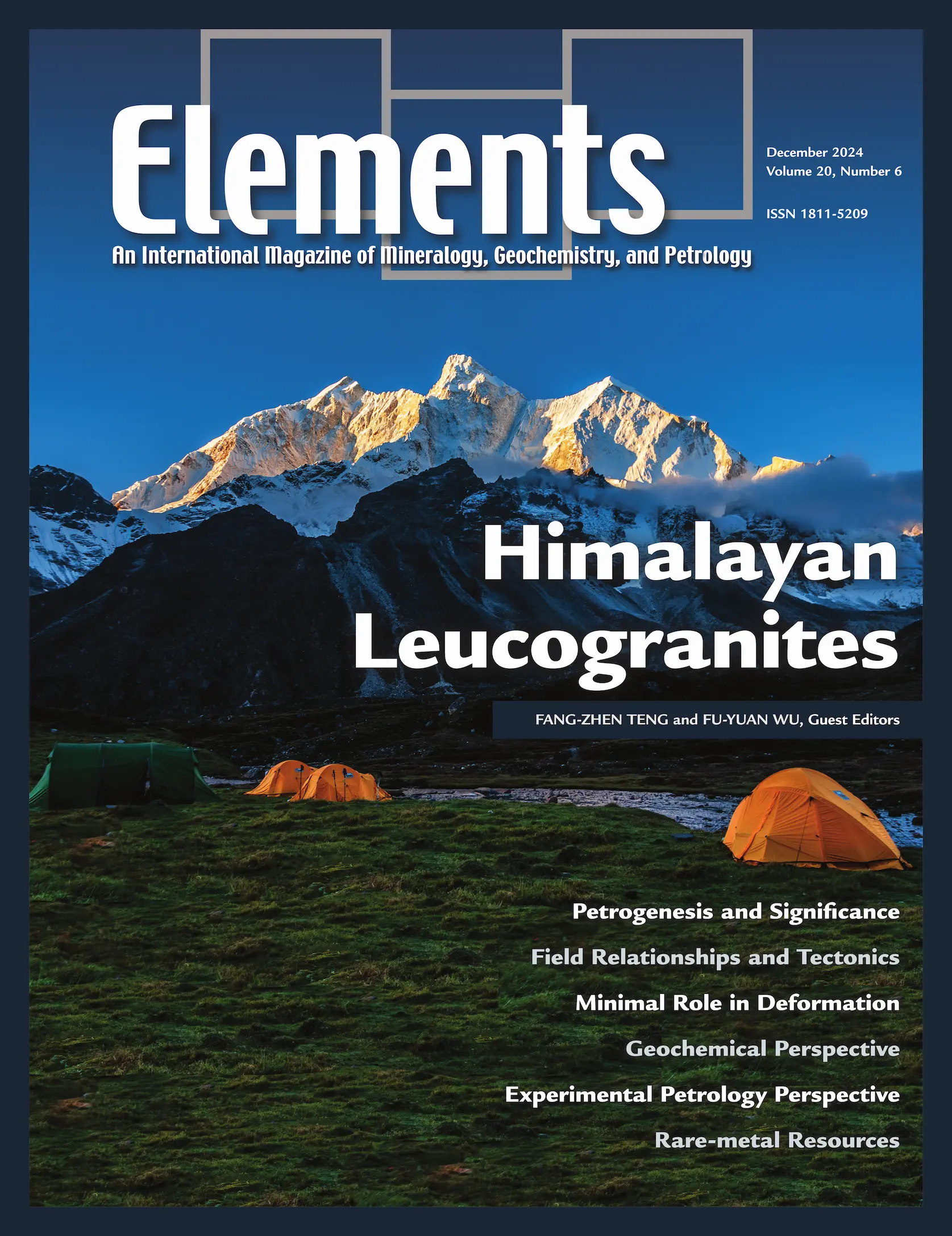
Periodic Table of Elements
October 26, 2024Himalayan Leucogranites, December 2024, Vol. 20, No. 6
$20.00
Himalayan leucogranites crop out intermittently over 2000 km along the Himalayan crest in the Himalayan-Tibetan plateau. They constitute some of the most well-studied granites in the world. They are considered to be purely crustal-derived melts and indicators of collisional orogenesis, and have greatly improved our general understanding of crustal anatexis, differentiation of felsic magmas, and tectonic evolution of the Himalayan-Tibetan Orogen.
Himalayan Leucogranites
December 2024, Vol. 20, No. 6
Himalayan leucogranites crop out intermittently over 2000 km along the Himalayan crest in the Himalayan-Tibetan plateau. They constitute some of the most well-studied granites in the world. They are considered to be purely crustal-derived melts and indicators of collisional orogenesis, and have greatly improved our general understanding of crustal anatexis, differentiation of felsic magmas, and tectonic evolution of the Himalayan-Tibetan Orogen. They provide a rare opportunity to explore the feedback relationships among geodynamics, tectonics, and magmatism in a classic continental collisional context. In this issue, we will describe our current understanding of the petrogenesis and significance of the Himalayan leucogranites by focusing on their tectonic and geodynamic background, source rocks, petrology, geochemistry, and links to orogenesis and economic resources.
Why You’ll Love Elements Magazine:
- Expert Contributors: Articles written by renowned researchers in the field of geoscience.
- Engaging Content: Join a community of readers who are passionate about Elements.
- Exceptional Quality: Each issue is printed on high-quality paper with stunning visuals and detailed illustrations that bring complex scientific concepts to life.
Order your copy of the December 2024 issue of Elements magazine today and explore Himalayan Leucogranites.
Related products
-
Diamonds, March 2005, Vol. 1, No. 2
$20.00Diamond, the fascinating ultrahard mineral, is the focus of considerable interest and scientific research. Recent advances particularly relevant to geoscientists include: diamond as a recorder of Earth processes from the perspective of inclusions, chemistry, and conditions of formation; synthesis for research applications and processing to modify color and physical properties, important to diamond gems and anvils; the implications of nanodiamonds from meteorites.
-
Frontiers In Textural And Microgeochemical Analysis, August 2007, Vol. 3, No. 4
$20.00Recent advances have been made in high-resolution in situ methods to image mineral growth patterns, analyse compositional and isotopic zonation, and improve our ability to visualize, study, and model rock textures in three dimensions. These advances provide a significant step forward in the understanding of how rocks form and the history they can tell us.
-
Large Igneous Provinces: Origin And Environmental Consequences, December 2005, Vol. 1, No. 5
$20.00Large igneous provinces record major outpourings of igneous rocks, both on the continents and in ocean basins. Their origin is still vigorously disputed, with models invoking mantle plumes, thermal effects of the lithosphere, and meteorite impacts.




